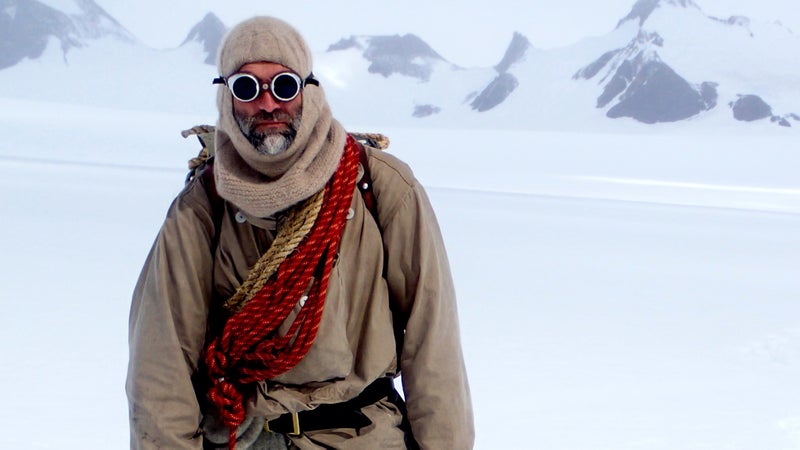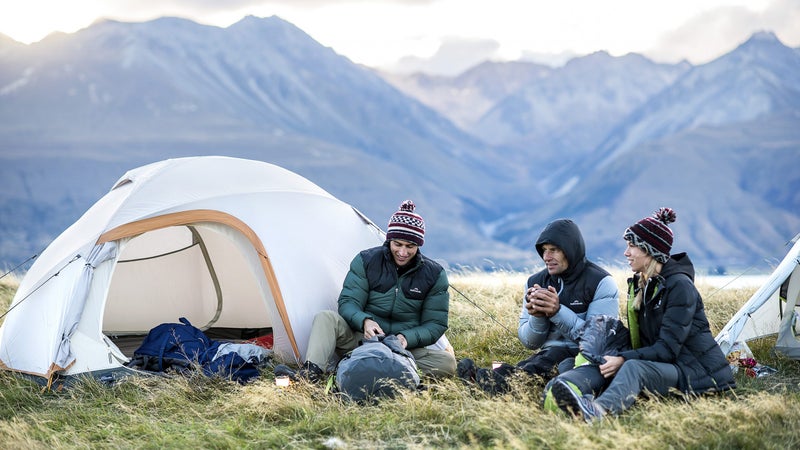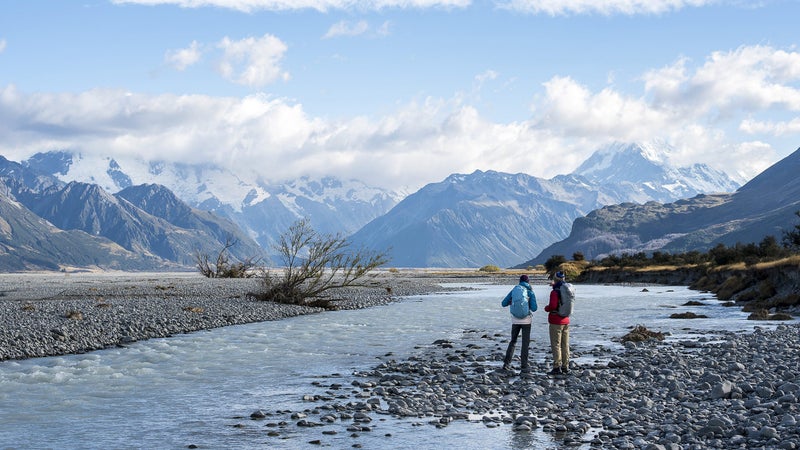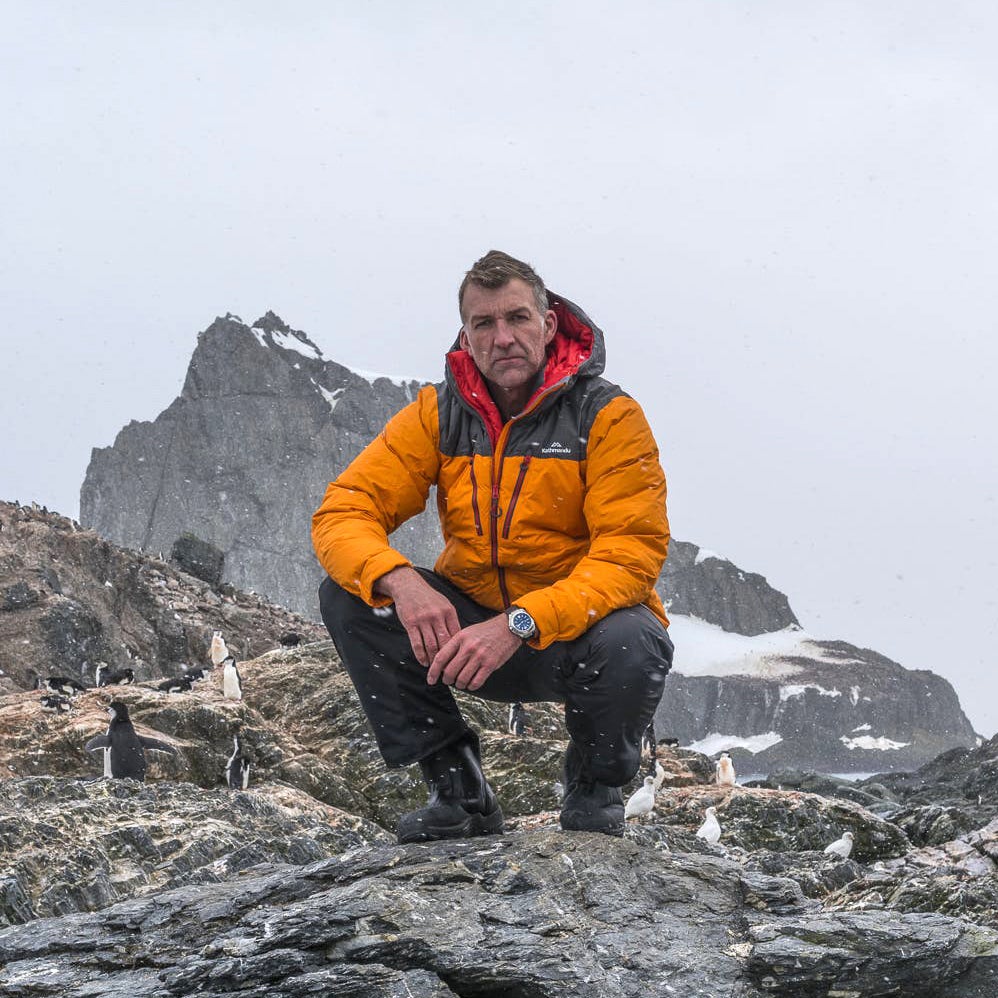Back in 2013, global explorer, environmental scientist, and Kathmandu brand ambassador thought it would be fun to retrace Sir Ernest Shackleton’s footsteps across the mountains of South Georgia while wearing the same gear that Shackleton did in 1916. “I was interested to see how I would handle doing things with the tools they had during the heroic era of polar exploration,” Jarvis says.
He did fine at the start, but the old gear eventually got in his way. “I was wearing animal pelts that got heavy and didn’t breathe and chafed. Honestly it was tough to cope with and I missed mydown jacket.”

Jarvis eventually completed that trip, and is now onto a new one called —which has him climbing all 25 glaciated peaks along the equator to highlight the impacts of climate change. Instead of wearing a turn-of-the-century kit, however, he’s back to using state-of-the-art gear from . Although the New Zealand–based outdoor gear and apparel maker is the eighth-largest gear manufacturer in the world, with 162 stores worldwide, it’s relatively unknown in North America—something Jarvis hopes to change.
Kathmandu has been at it for 30 years in the Southern Hemisphere, and like many major brands in North America, it’s become a trusted and integral part of adventure for families and explorers alike, making everything from tents for car camping to down layers built to withstand the world’s tallest peaks.

Originally founded to help make adventure gear more accessible to Kiwis, the brand’s DNA is rooted in travel. The urge to see the world is an intrinsic part of New Zealand culture, largely because of the country’s isolation, says Kathmandu’s brand manager, Tim Loftus. “We’re so far away from the rest of the planet, we’re basically raised with a need to explore other cultures,” Loftus says. “It’s a rite of passage. You go into a Kathmandu store and buy a 60-liter pack, your mom kisses you goodbye, and you go. You make it work, you stand on your own two feet. We’d like to bring that sensibility to the rest of the world.”
Of course it also helps the Kathmandu’s headquarters is on the South Island, in Christchurch, at the base of the Southern Alps, one of the most rugged and unpredictable mountain ranges in the world. Gear development and testing begins there, on peaks like 12,218-foot Mount Cook, but extends all across the globe as brand athletes put prototypes through the ringer and offer feedback that affects the final design.

Jarvis helped design Kathmandu’s new high-end XT line of gear and apparel by testing prototypes while climbing peaks for his 25Zero project. “Kathmandu’s attention to detail is outstanding,” says Jarvis. “I wore the new XT waterproof down jacket in Ecuador last year while climbing Cayambe volcano, and sat underneath a waterfall from a melting glacier, and the down jacket stayed absolutely dry.”
The partnership between Jarvis and Kathmandu is a natural fit. As an environmental scientist, Jarvis uses his expeditions to raise awareness about climate change, and Kathmandu is an industry leader in sustainability. Through 25Zero, Jarvis and Kathmandu are working to show the world the impact climate change is having on tropical glaciers located on iconic peaks like Kilimanjaro. While the ice has been a fixture on these mountains for thousands of years, most of the glaciers will be completely gone within 25 years. It’s a problem that Jarvis and Kathmandu believe drives home the urgency of climate change.
“You can’t see greenhouse gas, so talking about parts per million doesn’t do it for most of us,” Jarvis says. “Humans need to see evidence. Showing images of these glaciers, where they were 100 years ago and where they are now—it’s a powerful way of illustrating the issue.”

Kathmandu also tackles during manufacturing by doing things like upcycling 3.9 million plastic bottles into its materials, sourcing 100 percent responsible down, and partnering with the Fair Labor Association to support worker rights. The brand also offsets its carbon footprint by helping to fund more than 3,000 acres of native bush regeneration near its Christchurch home, and it created the program to provide gear for explorations that have a service angle—whether that’s performing dental treatments in Nepal or removing poacher’s traps from the jungles of Sumatra.
“Plenty of companies talk big, but Kathmandu really practices what it preaches in terms of sustainability,” Jarvis says. “The designers obsess over every detail, from the supply chain to the amount of waste the brand’s stores produce.”
“Plenty of companies talk big, but Kathmandu really practices what it preaches in terms of sustainability” Jarvis says.
Jarvis is currently halfway through the 25Zero Project and is in the process of putting together a documentary about his findings. The next mountain on his list is Kilimanjaro, in Tanzania, where the ice has defined the mountain for almost 12,000 years but isn’t expected to last another three decades.
“These glaciers are relics of a past climate and they’re just barely clinging on,” Jarvis says. “The question is, what else are we prepared to lose? I think if we can show people what’s happening, in a very obvious way, and offer guidance for what people can do at home, then we can make a difference.”
The gear has changed, but the adventure hasn’t. Since 1987, we’ve been designing gear to take on New Zealand, and the world. Our fans have helped us by being our travel experts, putting the gear through the harshest conditions, and have helped shape who we are today through their honest feedback. It’s about the journey more than the destination. We are .

